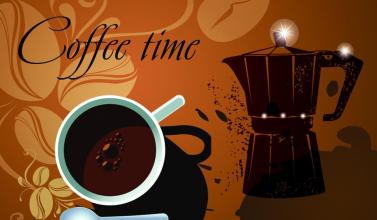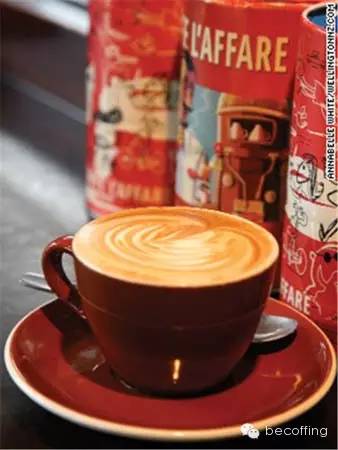Introduction of Brand types of Coffee beans introduction of Coffee planting Environment
. Robsta species (scientific name Coffea robusta Linden)
Varieties resistant to leaf rust found in Congo, Africa, teach Arabica species to be more resistant to the disease. People like to compare the robusta species to the Arabica species of coffee. In fact, the robusta species was originally a mutant of the Congolese species (scientific name Cofffea canephora), so it is the Congolese species that should be compared with the Arabica species. To this day, however, the name of the Robusta species is commonly used by the public, and it is regarded as the same species as the Congolese species.
Arabica coffee beans grow at colder tropical high elevations, and the hot and humid zone that is not suitable for Arabica coffee is where robusta coffee grows. Robusta has a unique aroma (called "Rob smell", which some people think is moldy) and bitterness, accounting for only 2% of mixed coffee. 3%, the whole cup of coffee becomes Robusta flavor. Its flavor is so bright and strong that if you want to taste it directly, you have to consider it. It is generally used in instant coffee (which extracts about twice as much liquid coffee as Arabica), bottled coffee, liquid coffee and other industrial coffee. The content of caffeine is about 3.2%, much higher than 1.5% of Arabica species.
The main producers of Robusta species are Indonesia, Vietnam and West African countries centered around C ô te d'Ivoire, Algeria and Angola. In recent years, Vietnam has made more efforts to become one of the major coffee producing countries. Coffee production is also included in national policy (Vietnam also produces some Arabica coffee).
Liberian species (scientific name Coffea liberica)
West Africa, the origin of coffee grown in Liberia, has a strong adaptability to all kinds of environments, such as high or low temperature, humidity or dryness, except that it is not resistant to leaf rust and its flavor is worse than that of Arabica, so it is only traded or planted in some West African countries (Libya, C ô te d'Ivoire, etc.).
About 65% of the coffee in circulation in the world market is Arabica.
According to the statistics of the International Coffee Organization (ICO), excluding the domestic transactions of each coffee-producing country, about 65% of the coffee in circulation in the world market is Arabica and 35% is robusta. Arabica species are characterized by slender and flat grains, while robusta coffee beans are more round and can be easily distinguished by their shape.
But if you add in the hybrids of Arabica and Robusta-such as the variant Variedad Colombia, which is the main variety of Colombian coffee, has 1/4 Robusta pedigree, and therefore resistant to leaf rust and high yield-and its mutant subspecies of coffee beans, the classification is more complicated. Some Arabica coffee beans are quite close to the native species, while others are quite similar to the Robusta species. Even if the coffee has the same name (named from the place of origin), as long as the cultivated varieties are different, the flavor of the Arabica species is different. The origin of the Arabica species is the Abyssinia Plateau of Ethiopia (now the Ethiopian Plateau). In the early days, it was mainly eaten as medicine (Islamic couples used it as a secret medicine for physical and mental therapy or for awakening the brain), and developed the habit of baking and drinking in the 13th century. It was introduced into Europe through the Arab region in the 16th century and became a favorite drink all over the world.
Arabica coffee accounts for 75% of all coffee. Its excellent flavor and aroma make it the only coffee that can be drunk directly among these native species. But its resistance to dryness, frost, diseases and insect pests is low, especially the natural enemy of coffee-leaf rust, so the producing countries are committed to variety improvement. Sri Lanka is an example. Sri Lanka used to be a well-known coffee producer, but coffee farms were not spared by leaf rust at the end of the 19th century. Since then, Sri Lanka has turned to develop the black tea industry and rank in the same black tea kingdom as India.
Arabica coffee beans are mainly grown in South America (except parts of Argentina and Brazil), Central America and Africa (Kenya, Ethiopia, etc.). Three native species of coffee, mainly East African countries, Asia (including parts of Yemen, India and Papua New Guinea)
There are about 40 species of coffee plants, but the only ones that can produce coffee beans of commercial value are Arabica, Robusta and Liberian. these three species are called the "three native species of coffee".
Arabica species (scientific name Coffea arabica)

Important Notice :
前街咖啡 FrontStreet Coffee has moved to new addredd:
FrontStreet Coffee Address: 315,Donghua East Road,GuangZhou
Tel:020 38364473
- Prev

Camping theme Cafe Creative Cafe Fashion trend
Visiting Something Out Camping Caf gives people the illusion of coming to the camping area, which is both a coffee shop and a compound place to sell camping supplies. The coffee shop will also change the interior decoration according to the season and fashion trend. You can order at the camping table, enjoy cool drinks, and lucky guests can have brunch in the tent. When the weather is fine, it will still be in coffee.
- Next

The cafe culture of Vienna and Austria, not just Starbucks Weiner mixed coffee
Vienna, Austrian coffee plays such an important role in Vienna's urban culture that in 2011 UNESCO listed Vienna's cafes as a world intangible cultural heritage. But some modern coffee connoisseurs believe that these cafes are lagging behind in coffee production technology and services. Because the function of these cafes is a public living room.
Related
- What brand of black coffee is the most authentic and delicious? what are the characteristics of the flavor of the authentic Rose Summer Black Coffee?
- Introduction to the principle and characteristics of the correct use of mocha pot A detailed course of mocha pot brewing coffee is described in five steps.
- Which is better, decaf or regular coffee? how is decaf made?
- How much is a bag of four cat coffee?
- How about four Cat Coffee or Nestle Coffee? why is it a cheap scam?
- Which is better, Yunnan four Cats Coffee or Nestle Coffee? How about cat coffee? is it a fake scam? why is it so cheap?
- How about Cat Coffee? what grade is a hoax? which instant coffee tastes better, four Cat Coffee, Nestle Coffee or G7 coffee?
- Process flow chart of coffee making-Starbucks coffee making process what coffee tastes good at Starbucks
- The top ten best coffee beans in the world Rose summer coffee or Tanzanian coffee tastes good
- Yunnan four cat coffee is good to drink?_four cat coffee is a big brand? four cat blue mountain coffee is fake?

